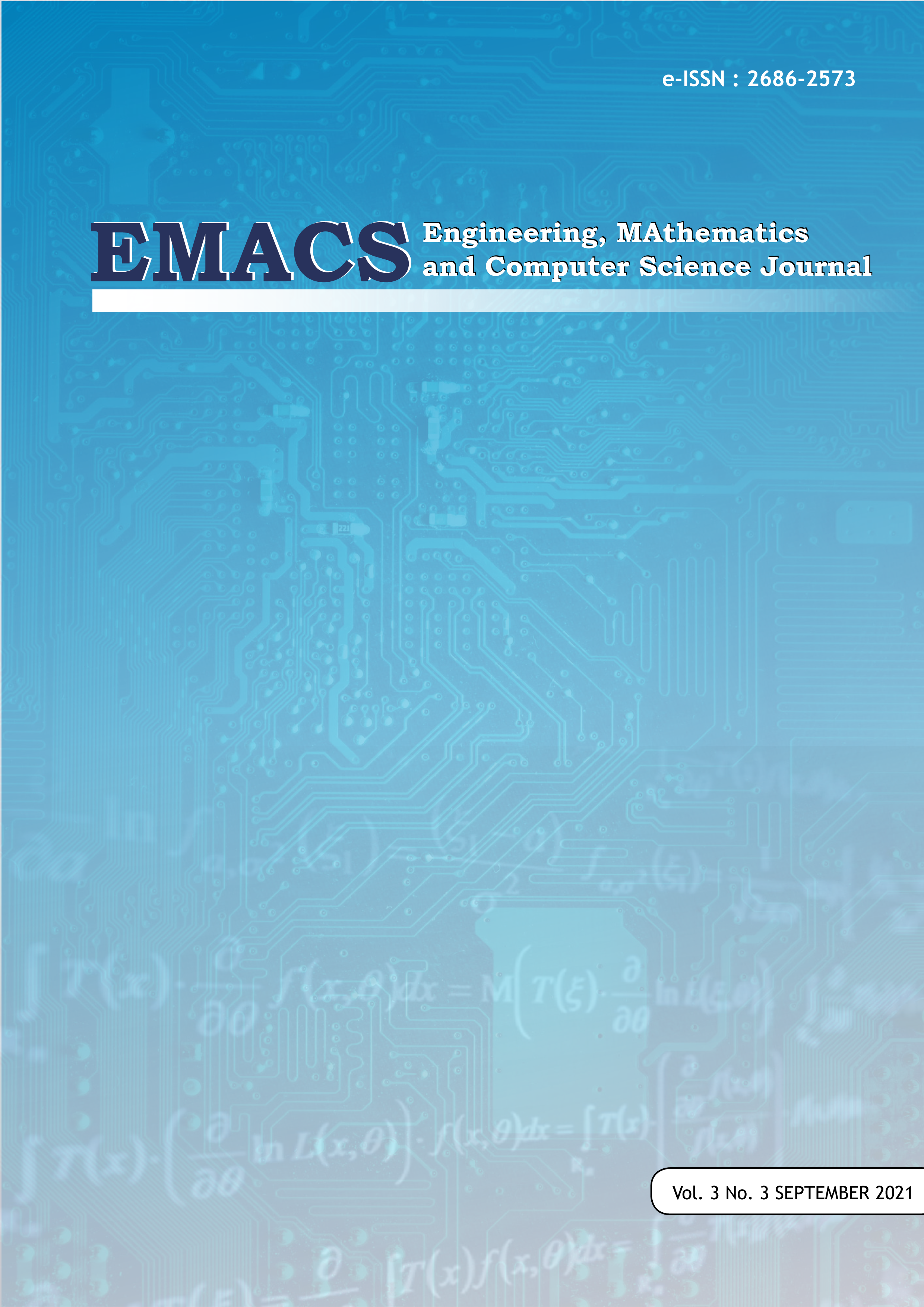IoT-Project Smart Trash Can with Blynk Platform Integration
DOI:
https://doi.org/10.21512/emacsjournal.v3i3.7499Keywords:
Internet of Things, COVID-19, Smart Trash Can, Blynk PlatformAbstract
This research is an implementation of the internet of things (IoT) for smart trash cans in places that are usually visited by many people. Currently, the Covid-19 pandemic in Indonesia is still quite high. Therefore, the Internet of Things (IoT) system is intended to help reduce the spread of the covid-19 virus. This system uses a NodeMCU ESP8266 microcontroller and several sensors that are used to support this research. The design of this IoT system focuses on measuring the distance between the trash can and the person disposing of the trash to calculate the opening and closing distance for the trash and measuring the height of the trash in the trash as a reference for cleaning workers to pick up trash at the right time. This smart trash can can open the lid automatically according to a specified distance and will send an alarm to the cleaning worker smartphone on duty when the height of the trash is full or reaches a predetermined limit.
Keywords: Internet of Things, Covid-19, Smart Trash Can, Blynk Platform
References
Verity, R., Okell, L. C., Dorigatti, I., Winskill, P., Whittaker, C., Imai, N., ... & Ferguson, N. M. (2020). Estimates of the severity of coronavirus disease 2019: a model-based analysis. The Lancet infectious diseases, 20(6), 669-677.
Kluge, H. H. P., Wickramasinghe, K., Rippin, H. L., Mendes, R., Peters, D. H., Kontsevaya, A., & Breda, J. (2020). Prevention and control of non-communicable diseases in the COVID-19 response. The Lancet, 395(10238), 1678-1680. Available from: http://dx.doi.org/10.1016/S 0140- 6736(20)31067- 9.
Kementrian Kesehatan RI. (2020). Pedoman Pencegahan dan Pengendalian CoronavirusDisease (COVID-19). Jakarta
Ara, A., & Jawaligi, S. (2019). NodeMCU (ESP8266) Control Home Automation using Google Assistant. International Research Journal of Engineering and Technology, 6(7), 3644-3648.
Parkash, P. V. (2016). IoT based waste management for smart city. International journal of innovative research in computer and communication engineering, 4(2), 1267-1274.
Santoso, H. (2015). Cara Kerja Sensor Ultrasonik, Rangkaian, & Aplikasinya. Diambil kembali dari Web Site Elang Sakti: https://www. elangsakti. com/2015/05/sensor-ultrasonik. html.
LastMinuteEngineers (2021). “How HC-SR04 Ultrasonic Sensor Works & Interface It With Arduinoâ€. Accessed date: 31/5/2021. Available from: https://lastminuteengineers.com/arduino-sr04-ultrasonic-sensor-tutorial/
Kim (2019). “What’s the difference between active buzzers and passive buzzers?â€. Accessed date: 31/5/2021. Available from: https://www.manorshi.com/What-s-the-difference-between-active-buzzers-and-passive-buzzers-id3333285.html.
Phidgets (2021) “WhTowerpro MG90 Micro Servoâ€. Accessed date: 31/5/2021. Available from: https://www.phidgets.com/?&prodid=245.
Downloads
Published
How to Cite
Issue
Section
License
Copyright (c) 2021 Engineering, MAthematics and Computer Science (EMACS) Journal

This work is licensed under a Creative Commons Attribution-ShareAlike 4.0 International License.
Authors who publish with this journal agree to the following terms:
- Authors retain copyright and grant the journal right of first publication with the work simultaneously licensed under a Creative Commons Attribution License - Share Alike that allows others to share the work with an acknowledgment of the work's authorship and initial publication in this journal.
- Authors are able to enter into separate, additional contractual arrangements for the non-exclusive distribution of the journal's published version of the work (e.g., post it to an institutional repository or publish it in a book), with an acknowledgment of its initial publication in this journal.
- Authors are permitted and encouraged to post their work online (e.g., in institutional repositories or on their website) prior to and during the submission process, as it can lead to productive exchanges, as well as earlier and greater citation of published work.
USER RIGHTS
All articles published Open Access will be immediately and permanently free for everyone to read and download. We are continuously working with our author communities to select the best choice of license options, currently being defined for this journal as follows: Creative Commons Attribution-Share Alike (CC BY-SA)





